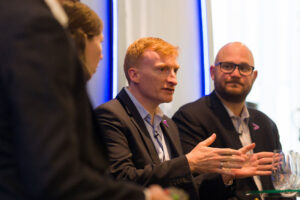Any organisation looking to perfect their products and services must inevitably turn to external sources of innovation. However, finding this innovation effectively and efficiently, and turning it into marketable products is a puzzle many struggles with. Osram, the Germany-based lighting manufacturer, tackled the issue by setting up a dedicated scouting function. Scouts and engagement managers work in the interface between project procurement and stakeholders and use a range of tools to successfully bring inventive solutions to the table.
The need for dedicated job roles to support innovation and product development needs across Osram originally surfaced some years ago. Peter Naegelein, Director of Procurement Partnering and Innovation, believed procurement could do more to support research and development (R&D) activities by getting involved in projects earlier than it was used to.
Category management and project procurement were already successfully established but teams were mostly sourcing reactively based on already-defined needs. A scouting team was established, and it now contributes to long-term innovation projects from their initiation, creating more alignment between stakeholder needs and what is available in the external environment.
Part of a bigger picture
Scouting is part of a broader set of activities that aim to find and create innovation at Osram. The scouting team, together with their sourcing colleagues rely on input from the market intelligence team when deciding what solutions to search for.
Scouts’ actions are also influenced by the portfolio strategy, which defines what products and services Osram will pursue to deliver. As such, market intelligence and the portfolio strategy together define the scouting pipeline. Scouts then make sure to feed any insights back to market intelligence colleagues, further strengthening the knowledge base across Osram.
Process, structure and clear responsibilities
The process for finding innovative suppliers follows a clearly defined sequence, as seen below. Scouts work to increase the quality of the longlist of prospective suppliers and consequently filter these suppliers into a relevant short-list. The longlist is reduced to a shortlist through a pre-screening questionnaire as well as request for information and quotation processes. The team evaluates, among other things, suppliers’ overall interest in R&D collaboration, responsiveness to queries, and product portfolio availability.

Each scout has dedicated countries that they are responsible for finding innovative suppliers from but also, importantly, new solutions from existing partners. Alongside scouts works a group of engagement managers, whose focus is on the internal organisation while scouts scan the external landscape. Scouts feed ideas, intelligence and solutions to engagement managers, who act as procurement representatives in cross-functional project teams and are involved in sketching product roadmaps.
Success factors
Clarity around reporting and resourcing for the team has been an important factor behind its success. On the organisational chart, engagement managers fall under project procurement while scouts are in a team of their own. Some scouts report into procurement and some to the R&D team, which according to Peter Naegelein has worked well for Osram.
Scouting activity can easily fall only under the R&D team’s remit, but procurement is in an equally good, if not better, position to lead. Due to reporting structures, procurement and R&D both contribute to scouts’ wages, which helps ensure commitment and results.
As always, it is important for the team to demonstrate return on investment in scouting activities, albeit this is not a straightforward task. The key metric Osram has landed on is customer satisfaction, measured through a yearly survey. Additional metrics that the team use include scouting and project pipeline, ideas-to-projects conversion rate, and number of projects and company profiles stored on knowledge management tool.





















